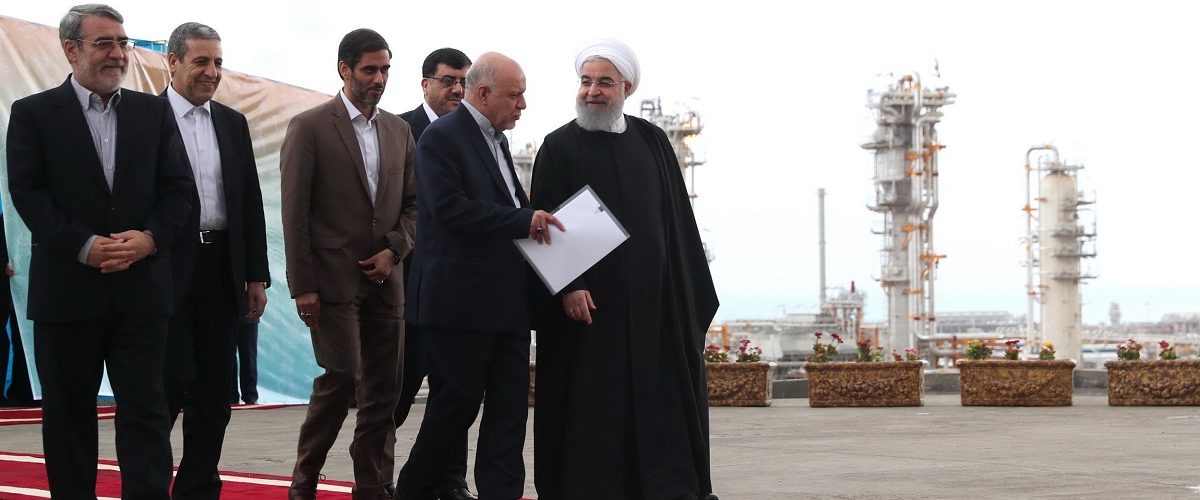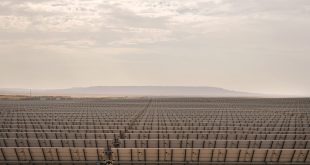The global gas and liquefied natural gas (LNG) market is currently witnessing an increase in the number of new manufacturers and an increase in the geopolitical importance of this product. Given that the share of natural gas in a country’s energy portfolio will increase by 2040, countries with natural gas resources are using government resources and the effective presence of large oil companies to increase their share in the LNG market. Despite huge oil and gas resources, Iran has not yet been able to shape an energy-guided foreign policy to actively participate in the global gas market. Apart from the annual export of 10 billion cubic meters to Turkey and 25 billion cubic meters to Iraq, Iran has no other major exports. Iran had several LNG projects that experienced the withdrawal of foreign companies from the sector following recent sanctions, and Iran does not have the domestic capital and technology to operate a facility. It should be noted that most of Iran’s oil fields are in the second half of their life span, and their annual production capacity is declining by 8% annually.
Oversupply in the Global Gas Market and Lower Prices
Prior to the outbreak of the coronavirus, gas and LNG prices were gradually declining as the LNG market witnessed a surplus. The huge investment in the LNG industry of the United States and Qatar, along with Australia and Russia, has enabled consumer countries to make contracts to import LNGs on more favorable terms. All gas-producing countries have targeted the Chinese market, as energy consumption in China will increase in the coming years. In early April, the head of Qatar Petroleum announced that the company was looking to complete LNG projects in the North Field expansion , regardless of the LNG price decline, and planned to spend more than 110 million tons of LNG annually in the short term. Qatar is planning to remain the world’s largest LNG exporter.
Pressure Reduction in South Pars Gas Field
Nearly three-quarters of Iran’s total gas production comes from South Pars, yet as claimed by Iranian officials, pressure on the Iranian part of the field (two-thirds of the reserves in South Pars are in the Qatari sector) is declining. Usually, any oil or gas field enters the second half of its life span when part of its reserves are extracted and the natural pressure of the reservoir decreases. As a result, fields must find a way to maintain levels of production. The pressure on the Qatari section of the field eased years ago as Qatar has produced 2.5 times as much gas from South Pars as Iran. Therefore, even if Iran increases the number of current normal platforms in South Pars and completes the phases, these platforms will not be useful in the next three years. While the latest platform, which was installed in South Pars in mid-March, was 2,300 tons, current platforms in South Pars should be at the 20,000-ton level to stop an annual dramatic drop for the field’s gas production.
The Iran-Iraq Natural Gas Pipeline
Turkey and Iraq are major destinations for Iranian gas exports. Iraq’s growing need for gas is due to the development of its power plant capacity. Iran needs a reliable source of funding. After the stabilization of the country’s political situation over the past decade, and in order to develop their civil and energy infrastructure, Iraqi government officials have been seeking gas resources in Iran, due to its close proximity. Iran has been using energy exports to increase its political influence in Iraq, which pushed Washington to put pressure on the Iraqi government to find an alternative to Iranian natural gas and electricity.
Iran-Turkey Gas Pipeline
Iran and Turkey signed an agreement in 1996 to export gas to Turkey, but the price and quality of imported Iranian gas has never been favorable to Turkey. Due to the high price of Iranian gas when compared to that of Russian and Azerbaijani gas, the country has repeatedly sued Iran in the International Court of Arbitration. Iranian disruption of the flow of gas exported to Turkey in the colder months of the year has been another factor making the arrangement unreliable for Turkey. This Iranian export contract expires in 2026, and negotiations to extend the contract have not yet been concluded. Turkey has reportedly asked Iran to reduce gas prices, and Iran has called for a doubling of gas exports to Turkey. If Turkey’s gas supply and energy infrastructure system is integrated, the country will be able to use gas imported from Russia and Azerbaijan in the eastern and southeastern regions of the country, thus reducing the country’s need for Iranian gas over time.
The United States has also been exporting LNG to Turkey since 2016. In 2016, the U.S. exported about 3.53 billion cubic meters of LNG to Turkey, according to the U.S. Energy Information Administration. This amount reached 38.5 billion cubic meters in 2018. These figures show that LNG exports to Turkey are increasing every year and given Turkey’s huge investment in increasing LNG’s share of its energy portfolio, it should see an increase in LNG imports, especially from the United States.
The Future of Iranian Natural Gas Exports to Pakistan and Oman
For Iran, gas exports to neighbors have been a priority. According to the Ministry of Oil’s strategy, after bringing all phases of South Pars online, Iran will be able to export about 200 million cubic meters of natural gas to its neighbors. Iran has a number of natural gas projects, including the Iran-Pakistan pipeline. By 2014, Iran had completed the infrastructure needed to supply natural gas to the Iranian-Pakistani border. But Pakistan was unable to build the Iran-Pakistan border pipeline due to financial difficulties and disabilities. Saudi Arabia is also trying to implement important energy diplomacy in Pakistan. During the Saudi Crown Prince Mohammad bin Salman’s visit to Pakistan, the two countries signed several agreements in the energy sector, and it seems that Iran will not have an easy time exporting natural gas to Pakistan.
Iran likewise planned to transfer natural gas to Oman by 2020, and according to the agreement, Iran must export 1.5 billion cubic meters of natural gas to Oman. Iran is also interested in using Oman’s LNG facilities to produce LNG and export LNG. Prior to October 2018, the Oman Ministry of Petroleum had held a tender to select a company to rebuild the pipeline in Oman.
Iranian Gas in the European Union Market
Given the high cost of transporting Iranian natural gas to the European Union and Russia’s monopoly in the European gas market, along with the gradual decline in EU demand for natural gas, Iran does not have much chance of exporting gas there. Russia is a competitor to the United States and Iran in both the LNG market and natural gas. Qatar, meanwhile, plans to increase its LNG exports to 100 million tons by 2024 and maintain its position as LNG’s largest exporter.
Iran, with its huge oil and gas resources, has so far failed to use energy exports in its foreign policy. Although Iran has the second largest gas reserves in the world, its share of the global gas market is less than half a percent. Energy exports that expand Iran’s share of the regional and global energy market would make it possible to increase both regional security and trade volume by ultimately creating interdependence.
Iranian energy diplomacy needs to be redefined. Given the extensive investment of major energy-producing countries to maintain and increase their shares, especially in the LNG and natural gas sectors, Iran will not have an easy task ahead even if it resolved the tensions with Washington. Without foreign capital and technology, it is exceedingly difficult to gain a greater share of the global energy market, given the prevalence and diversity of energy-producing countries. However, in the face of sanctions, Iran does not have much chance of acquiring foreign capital and technology.
Challenges Facing Iran in Natural Gas Exports During the Post-Coronavirus Era





